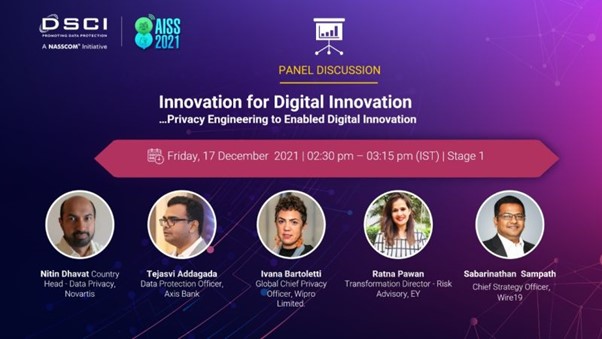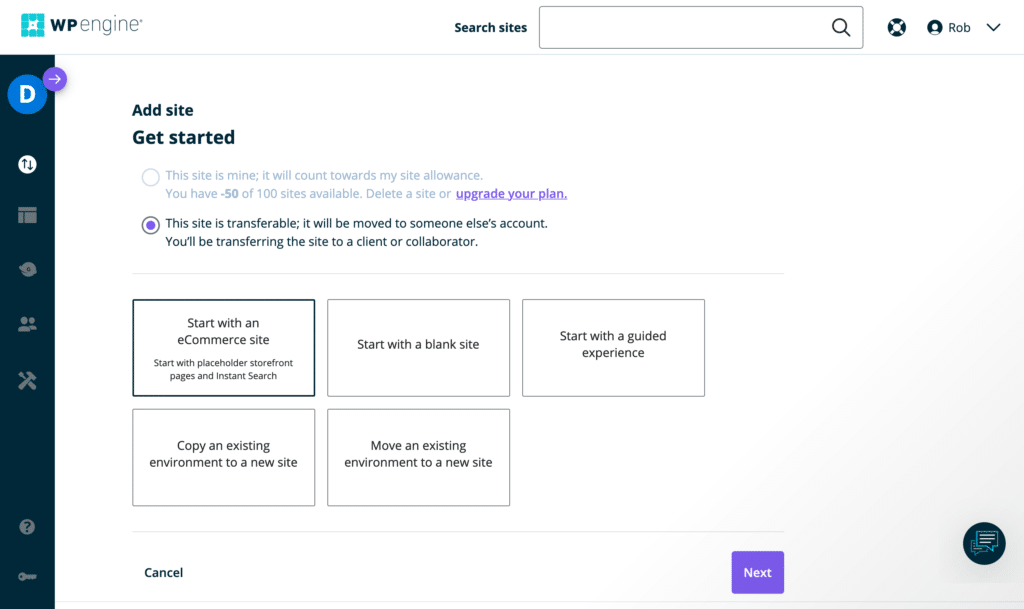[ad_1]
- In enterprise fashions, information availability, modes of engagement
- In buyer expectations and consciousness
- Information privateness / safety regulatory panorama
- Elevated laws because of technological developments – IoT, AI, 5G, drones, biometric recognition, cryptocurrencies and extra.
Within the gentle of digital transformation and adoption of newest applied sciences just like the cloud, there’s a separation within the rights of possession, administration and utilization of sources and this will increase the danger to privateness. Therefore, this local weather of change begs a local weather of innovation.
There was a time when safety was an afterthought – a secondary characteristic on the periphery of the design course of. However right this moment, the intention of Privateness Engineering is to deliver safety on the centre of the design course of. Let’s delve into the idea.
What’s Privateness Engineering?
Privateness engineering is a methodological framework of integrating privateness within the life cycle of IT system design and growth. It operationalizes the Privateness by Design (PbD) framework by bringing collectively strategies, instruments and metrics, in order that we will have privateness defending methods. With the pandemic, digital innovation has turn out to be the necessity of the hour and thus, has introduced PbD much more within the limelight. The objective of privateness engineering is to make Privateness by Design the de-facto customary for IT methods.
Completely different our bodies have completely different definitions of privateness engineering, however the gist is identical – To deal with full lifecycle of particular person privateness and never simply throughout information storage and evaluation. Privateness engineering incorporates a extra holistic strategy protecting legalities, danger evaluation and consumer sentiment.
US-based Nationwide Institute of Requirements and Expertise (NIST) defines privateness engineering as “a specialty self-discipline of methods engineering centered on attaining freedom from situations that may create issues for people with unacceptable penalties that come up from the system because it processes PII.” The under picture sheds extra gentle on the targets of Privateness Engineering:
Privateness engineering, by making privateness an integral a part of the designing and growth course of (SDLC), tries to cut back dangers and to guard privateness at scale.
As per Gartner’s definition, “Privateness engineering is an strategy to enterprise course of and expertise structure that mixes varied methodologies in design, deployment and governance. Correctly carried out, it yields an finish outcome with each:
The method entails ongoing re-calculation and re-balancing of the danger to the person information proprietor whereas preserving optimum utility for private data- processing use circumstances.”
Thus, privateness engineering is the muse of holistic privateness. It can assist to construct a structured framework and produce privateness as a mainstream idea for Organizations to deal with.
Privateness Engineering – bridging the hole between IT, Threat and Compliance, Privateness, Safety and Enterprise
Privateness safety continues to be a really essential challenge for people, companies and governments all throughout the globe. Individuals within the type of shoppers, need personalised content material and repair deliveries, however on the identical time they need privateness protections to be maintained in any respect prices they usually anticipate organizations and companies to take motion to guard shoppers and from governments to guard residents’ information.
Few frequent issues that I imagine are true relating to this state of affairs are:
- Customers need transparency about how companies are storing, processing and using their information.
- They’re very involved about how their private info is utilized by superior applied sciences like AI and any sort of abuse erodes their belief – utterly.
- Many shoppers don’t belief that personal companies will observe/have laws and compliances in place to maintain their information safe. So, they give the impression of being as much as their authorities to guard their information with legal guidelines, insurance policies and different enforcement mechanisms.
- As soon as the belief is misplaced, shoppers take motion to guard themselves and their information. They even change firms or suppliers and transfer to those whom they belief can hold their information protected. Many terminate relationships with conventional and on-line companies over information privateness.
With the arrival of various privateness legal guidelines like EU’s GDPR and extra, framework has been formulated for Information Topic Entry Requests (DSAR). Many privateness legal guidelines allow shoppers to boost requests regarding their information and supply management within the arms of the shoppers that they’ll take motion if they’re dissatisfied with how their information is saved, processed or utilized.
Privateness engineering that bonds innovation with PbD, ensures that each IT system should present the best attainable privateness to private information. This will increase the shoppers’ belief that their information is protected as a result of the privateness has been ingrained within the system.
Professionals and cons of Privateness Engineering
| PROS OF PRIVACY ENGINEERING | CONS OF PRIVACY ENGINEERING |
| Reduces dependence on exterior safety enforcements | Requires legal guidelines and insurance policies – most are nonetheless below growth section |
| Privateness is the default setting because it’s embedded in design. It gives proactive safety, not remedial one. | Violations attainable due to some errors throughout design or growth section, unhealthy actors, authorities mandates, availability of recent applied sciences and so forth. |
| It gives finish to finish safety with full safety of system lifecycle. | Some might discover it costly to implement as this requires expert engineers. |
| It respects consumer privateness – ensures that the expertise and methods stay consumer centric. | Some might discover it restrictive to innovation. |
| It helps companies to extend buyer belief and keep away from penalties and future liabilities. |
Privateness Engineering- serving to the Digital Transformation packages
Digital transformation has turn out to be mainstream now. Organizations are embarking on this journey and realizing that in the event that they don’t do it now, they are going to turn out to be redundant. This has given rise to a development of adopting digital applied sciences. However this has additionally given rise to an explosion of knowledge.
Privateness engineers play a vital position in Digital Transformation. They be sure that privateness issues are built-in into product design. Privateness engineering ends in higher merchandise, will increase prospects’ belief and thus influences an organization’s backside line. Privateness by Design has gained significance extra so with legal guidelines like IT Act, EU GDPR and so forth. Consultants have predicted that privateness can be an integral a part of the expertise revolution and people integrating privateness in product lifecycle are doing the best factor and can succeed sooner or later.
Challenges related to privateness implementation in organizations
The challenges to implementation of privateness embrace and are usually not restricted to the next.
- One can’t defend what one doesn’t find out about. In most organizations, delicate information is proliferated throughout completely different areas – on premises, within the cloud and with managed service suppliers. The problem lies in finding the information, understanding the place it originated from, and monitoring it in a dynamic setting.
- For conventional, legacy methods, it’s a problem to bake information privateness into core system design.
- There’s a tug of struggle between information privateness and information usability. It turns into tough for organizations to seek out the best stability between usability and information privateness – defending delicate information with out inhibiting enterprise processes, is a matter of concern.
- There aren’t any requirements or greatest practices on how one can combine privateness into SDLC.
Greatest practices in privateness implementation in organizations
Greatest practices in privateness implementation are as follows.
- Do privateness affect evaluation throughout the group to grasp the aim of gathering private information and processing actions undertaken.
- Throughout digital channels, cookie discover ought to be there to offer details about what and the way cookies are used.
- Difficulty a privateness coverage to the purchasers – this gives a simple to grasp means to prospects for ideas of the group.
- Belief framework ought to be there inside layers throughout individuals, processes and expertise and I believe that the
– Individuals capabilities will be obtained with coaching, inner and buyer privateness insurance policies, information accuracy, entertaining buyer request for Personally identifiable info (PII) and holistic view into buyer relationships.
– Course of capabilities will be obtained with design adjustments to have privateness considering on the core, information classification, sustaining CIA triad – confidentiality, integrity and availability for private information.
Furthermore, buyer consent performs a key position right here. They will present their information for higher providers, a per their wants, supplied you’ll be able to create belief in them that their information is protected as an asset throughout the group.
Being related to ZNet Applied sciences, a number one distributor of Acronis cyber-protection solutions throughout the globe, I’ve seen that companies handle safety utilizing a mess of instruments. These patchworks of instruments make cybersecurity implementation a tiring and less-effective course of. By integrating information safety and cybersecurity to guard methods, functions, and information, the danger from cyberattacks is diminished.
Companies are extra environment friendly when there may be automation of backup and restoration course of, cyberattack prevention capabilities together with ransomware anti-malware, and virus scanning, patch administration, vulnerability assessments, and extra are taken care of from a single console.
Some current developments within the Privateness engineering world
Privateness engineering, like privateness occupation, is a continually evolving self-discipline. Efforts to handle privateness utilizing technical means are nonetheless scattered and disconnected.
- Privateness engineering tips have been created in 2019 by ISO: ISO/IEC TR 27550:2019 Data expertise — Safety methods — Privateness engineering for system life cycle processes. Click here to know more.
- NIST revealed Model 1.0 of the Privacy Framework on January 16, 2020. As per NIST, The Privateness Framework is meant to be extensively usable by organizations of all sizes, no matter their position(s) within the information processing ecosystem. It is also designed to be agnostic to any explicit expertise, sector, legislation, or jurisdiction, and to encourage cross-organization collaboration between completely different components of a corporation’s workforce, together with executives, authorized, and cybersecurity.
- In India, organisations just like the OECD and NITI Aayog are supporting rising values frameworks, together with bias mitigation, equity and platform accountability.
- For making everybody conscious, workshops and trainings are being carried out by trade our bodies like IEEE.
I had lately participated within the sixteenth Version of the Annual Data Safety Summit (AISS) by NASSCOM-DSCI wherein I spoke on the subject of Privateness Engineering together with different eminent audio system:
✅ Ivana Bartoletti, World Chief Privateness Officer, Wipro
✅ Nitin Dhavate, FIP, CIPP(E), CIPM, CISSP, CISM, Nation Head – Information Privateness, Novartis
✅ Ratna Pawan, Transformation Director – Threat Advisory, EY
✅ Tejasvi Addagada, Information Safety Officer – Axis Financial institution

You may watch the recording of the session under.
You may as well learn concerning the state of cybersecurity services and products trade in India in an fascinating report right here: DSCI report on ‘India Cybersecurity Industry’ launched by Secretary, Ministry of Electronics & IT
What are your ideas concerning the state of privateness in India? Do let me know within the feedback part.
Featured picture credit score: Acronis

Sabarinathan Sampath, Senior Vice President and COO, ZNet Applied sciences
Sabarinathan is a seasoned senior government with over 2 many years of expertise in delivering large-scale, customized, built-in expertise options for main Telcos, Hosters and enormous enterprises. Experience contains consulting and launching of internet/e-commerce and cloud providers supply platform (providing array of SaaS/IaaS/PaaS providers). He’s an inspirational chief and a mentor who works successfully in constructing new world, cross-functional groups. He has held senior positions in Europe and in South East Asia in giant multinational organizations. He participates actively in varied IT trade occasions within the position of speaker, moderator, and panelist.
He’s now settled in India together with his spouse and a couple of youngsters. He likes to get on lengthy rides on his cycle as part of his each day routine.
[ad_2]



